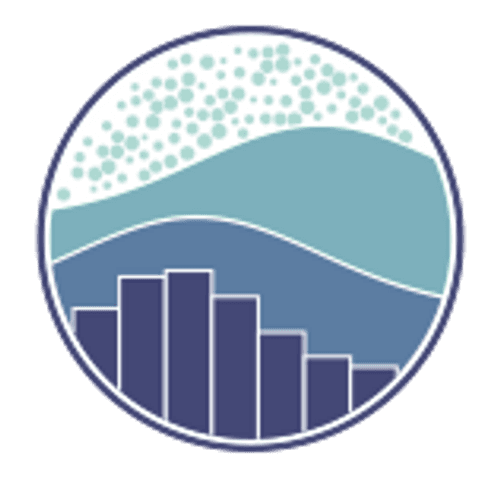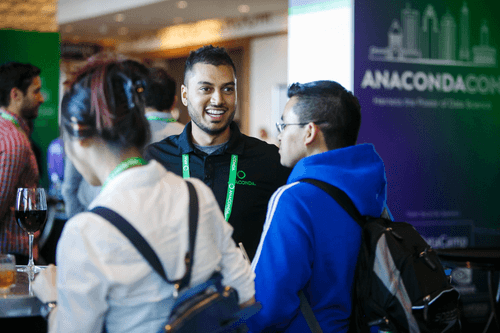An Introduction to the Seaborn Objects System


This blog is based on our Senior Data Scientist, Sophia Yang, and her personal experience with networking in tech.
Since 2018, there have been accounts of a data science talent shortage, which essentially states that there isn’t enough data science and analytics talent to go around. While data science is a relatively new field, headlines around the data science talent shortage paint a picture of waltzing into an interview and being offered a rewarding job because there are many more job openings than data science applicants.
This isn’t the case at all. It can be incredibly challenging, especially for junior talent, to even be considered for open data science positions. As a data scientist who’s spent time mentoring junior staff members and working alongside other senior team members, I know that getting a job and starting your career is much more challenging than it is often painted. However, one thing that has been surprisingly effective when it comes to finding rewarding opportunities is networking. Before being hired at Anaconda, I attended the AnacondaCON conference in 2018, met many Anaconda employees, got a referral, and then got the job! I have met many people who also landed their jobs through networking. So, I wanted to share my thoughts on effectively building a professional network and getting a job through networking.
The best way to network is through in-person, face-to-face communication. While it is not always possible to go to in-person networking events, especially during the pandemic, there are now more opportunities for networking through virtual events, forums, and social media.
For example, if you’re interested in connecting with more tech professionals in the Bay Area, you can attend Bay Area online meetups—even if you don’t live there. And if you are interested in working for a specific company, go to that company’s events or check what kind of conferences its employees attend. At Anaconda, you can find us at our company conference, AnacondaCON. My colleagues and I are also interested in attending SciPy and PyData events, where you can find me and many other data professionals looking to meet others in the field.
If you are a student, go to career events through your university. Job fairs actually work! Making an impression at these events can feel overwhelming, and we often put a lot of pressure on ourselves to do a great job, but it’s not as difficult as you think. Just by showing up, connecting with people, and talking about your interests and the work you do is valuable.
Let me tell you a story: I went to a university career event a few months ago and talked to students. Many of the students asked me similar questions like:
What does the recruiting process look like at your company?
When do you hire interns?
What do data scientists do?
Among all the students I talked to, only two made an impression on me.
How?
They took the time to do their research and followed up after the event. One student had read my blog posts and knew that I’m passionate about data visualization. My eyes immediately lit up when he started to talk about his experience with communicating data through visualization. After the event, he sent me his visualization work, and I loved it. Another student at the career event asked several questions about internships. After the event, he connected with me on LinkedIn and emailed me his resume. A month later, he followed up to see if our intern program at Anaconda was open. Both of these students made an impression because they not only asked unique questions but they followed up. Showing that you care and are passionate about a role can go a long way in finding a job in data science.
What if you would like to work for a company, but they are not hiring for the position(s) you are interested in? For small to medium-sized companies, sometimes cold emails work! Some companies and managers take that initiative seriously and may open up a position they never knew they needed. Alternatively, they may be hiring for someone with more years of experience. Reach out anyway; showing that initiative and interest in the position could help secure an interview. It’s also possible that hiring managers are busy and haven’t had time to recruit or interview for a job. Being proactive about your career can help get you an intro call and showcase the value you can add to their business.
Sometimes the challenge is finding the right person’s email address to get a conversation started. LinkedIn is a good place to start, but I would recommend asking someone in your network for a referral if possible. While cold emails sometimes work, having a “warm” connection works even better. Try to see if you have a mutual contact who can recommend you to someone at the company you’re interested in.
There is no better way to build a relationship than working with someone directly on a project! Many companies and employees contribute to open-source projects. Contributing to open-source projects will help you build a strong resume and connect with other project contributors. You may be asking yourself: What if I’m a junior software engineer, data scientist, or product manager who finds it hard to contribute to an open-source project codebase? Contributing to project documentation is equally valuable and very appreciated. Open-source projects love community contributors, and the project maintainers are often very happy to help. You can start with something minimal, like fixing typos and sentences in the documentation. Once you get more familiarized with the project and the codebase, you can look at the issue report, see if there are minor bug fixes you can contribute to, and ask the project maintainers for help when you get stuck.
After you interview with someone for a job or an internship, do you connect with them on LinkedIn afterward? If not, do it! Even if you feel like it wasn’t a great interview, be sure to connect. Interviewing is an opportunity to talk to a professional in the field directly. Even if it doesn’t land you your dream job, there are often opportunities to collaborate with or receive a referral from that individual in the future. Be sure to thank them in your LinkedIn message and follow up in the future for mentorship, advice, or other opportunities. As mentioned previously, most of my memorable interactions have been with those who take the initiative and follow up, so your message will go a long way.
LinkedIn isn’t challenging to use once you get the hang of it, and it’s a very beneficial tool for connecting with individuals and sharing relevant articles and research with your network. First, try to have a completed LinkedIn profile. This means including a profile picture, a headline, your experiences and education, and any licenses and skills. Additionally, you can upload articles or research links to help complement those experiences. Having a complete profile will encourage others to accept your invitations to connect and allow recruiters to find you effortlessly through the LinkedIn algorithm. If you’re looking for a job, you can add to your profile that you’re open to finding new positions so recruiters can pinpoint your profile even more easily.
Another way to meet individuals who may share your interests is through Twitter, GitHub, and even the Anaconda Community Forums. These platforms present opportunities to find like-minded individuals you can later connect with on LinkedIn.
If you’re connecting with someone—especially when it’s a cold connection—always include a message in the connection invite. Be sure to include a polite, meaningful, specific message. If you have any commonalities (e.g., school, location), mention that in your message. If this person is working in a specific area you are interested in, note your thoughts and interests. A meaningful message will help facilitate further discussion and help build an actual connection.
Refrain from immediately asking for a referral. People are not likely to refer someone they do not know. Start with a connection request, let your connection get to know you through conversations, and potentially even ask for an informational interview to get some face time and build a relationship. After you’ve established some rapport, you can then ask for a referral.
Getting started in data science can be challenging. Still, the power of networking can help you land your dream job, make professional connections, and grow in your career. I hope you find these tips helpful, and if you have any other suggestions for landing a data science job, let me know! Feel free to connect with me on Twitter and Linkedin, and you can continue the conversation about this article on https://community.anaconda.cloud/.
Talk to one of our experts to find solutions for your AI journey.